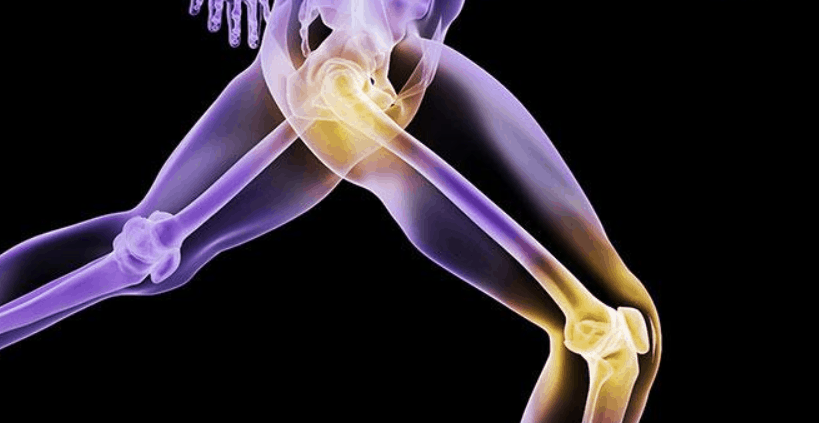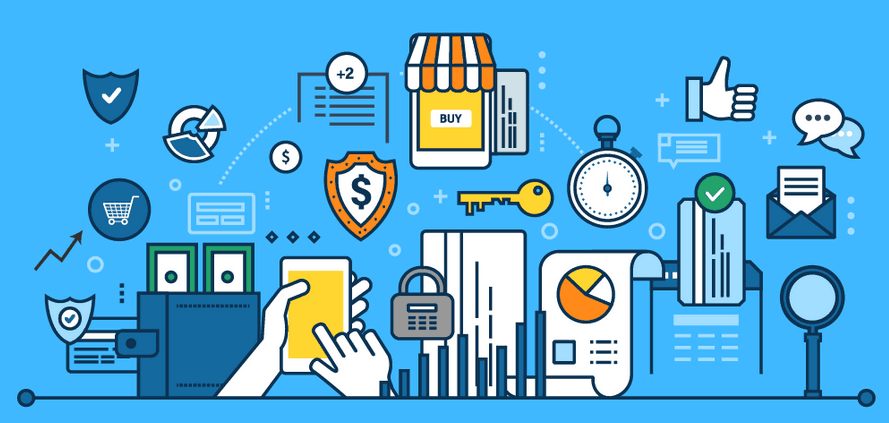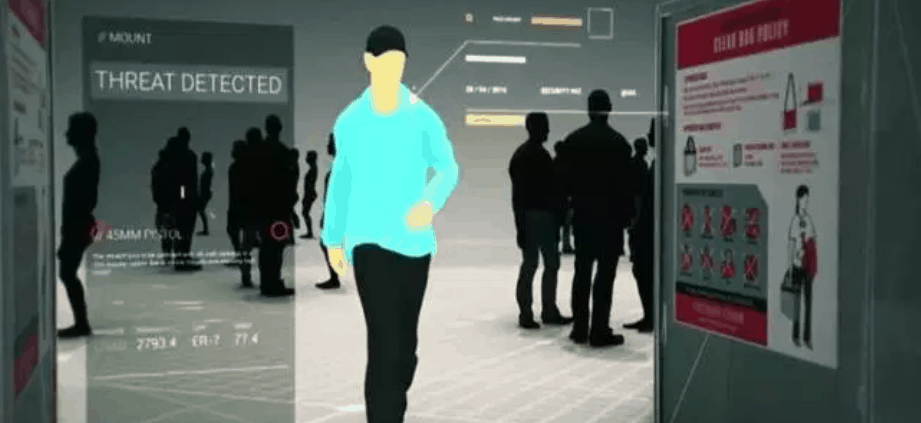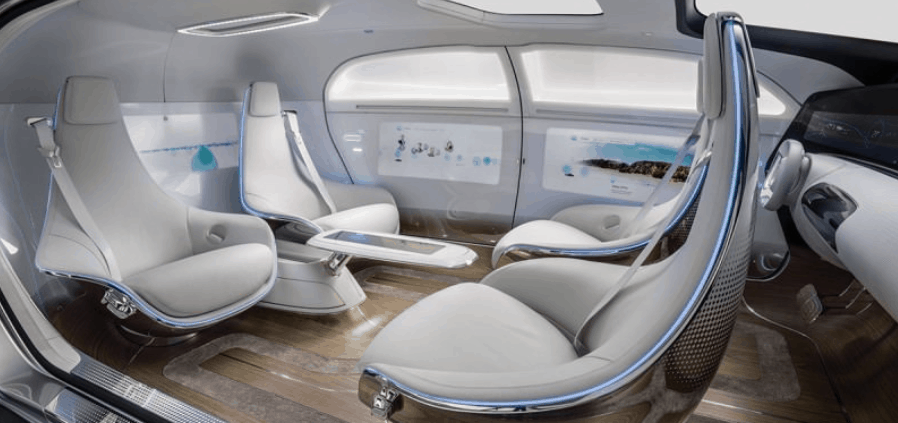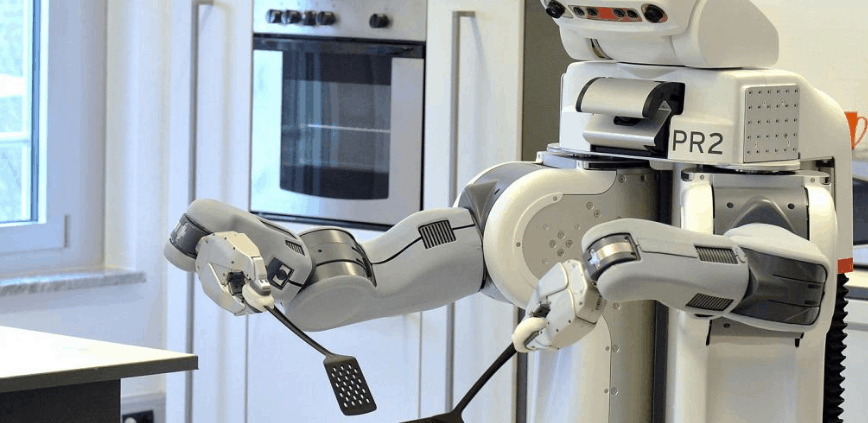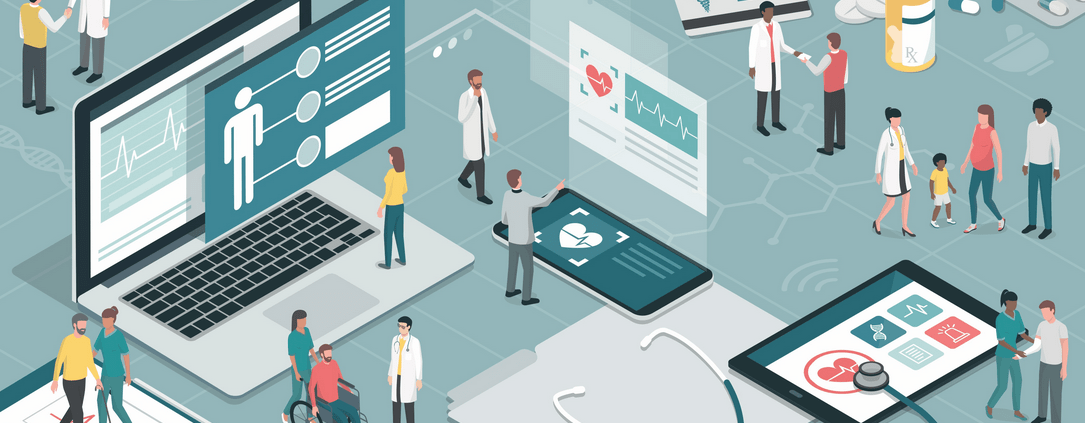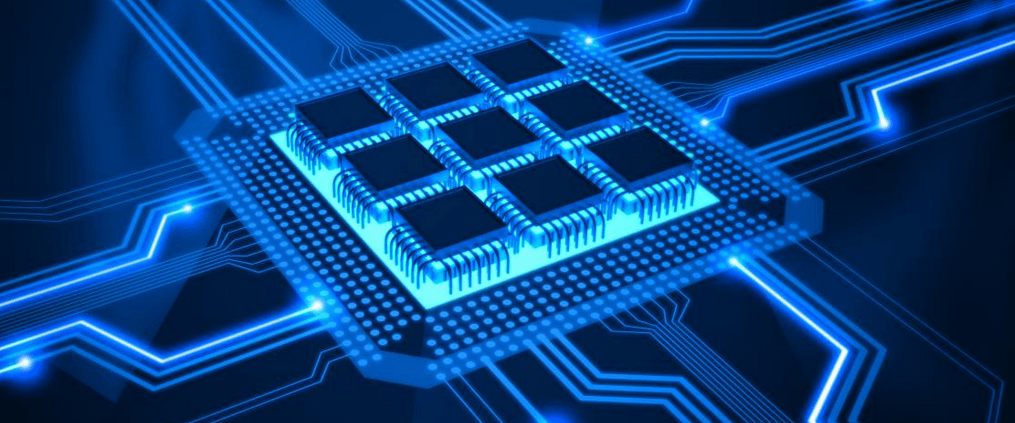Trend Letter Updates
Market Notes – May 12/22
Stocks rebounded sharply in the final hour of trading, with the S&P 500 almost erasing a selloff that pushed it to the brink of a bear market earlier Thursday. The turnaround came as Federal Reserve Bank of San Francisco President Mary Daly told Bloomberg News that a 75-basis-point increase in rates is “not a primary consideration,” while […]
Market Notes – May 9/22
Global markets got hit hard today with investors refocusing on the Ukraine war, a global energy shock and the risk asthe Fed tries to fight the supply-driven inflation. “I’ve been in the markets for 25 years and I’ve never seen anything like this,” said Danielle DiMartino Booth, CEO and chief strategist for Quill Intelligence, a […]
Market Notes – April 28/22
US stocks ended sharply higher Thursday, led by technology shares as markets continued a comeback from steep losses earlier this week. This gain was in spite of the news that the US economy unexpectedly contracted at the start of 2022 for the first time in nearly two years as lingering supply chain imbalances, inflationary pressures, […]
Market Notes – April 26/22
Another rough day for stock markets globally. Most markets opened lower and after making a few feeble efforts to rally, they could not gain any traction. Lots of headwinds for the markets: inflation, central banks aggressively raising rates, Covid lockdowns in China, and the fear of escalation in the Russian-Ukraine war. Most of these markets […]
Market Notes – April 25/22
(AP News)…Elon Musk reached an agreement to buy Twitter for roughly $44 billion on Monday, promising a more lenient touch to policing content on the social media platform where he — the world’s richest person — promotes his interests, attacks critics and opines on a wide range of issues to more than 83 million followers. […]
Market Charts – April 13/22
Based on seasonality, most North American markets are in a strong period. Here we see the chart for the S&P 500, which is strong through to early May. The Toronto and Nasdaq charts look very similar. Gold is also in a very strong seasonal period, from mid-March right through to early June. The real returns […]
Market Notes – April 12/22
The market opened strong, but couldn’t hold the intraday gains. The S&P 500 continued to trade with lower highs and lower lows, and has now fallen through both the 50-DMA (red wavy line) and the 200-DMA (blue wavy line). The inflation numbers were the main problem for the markets, as US inflation came out at […]
Market Charts – April 11/22
Global stock markets fell on Monday, pulled lower by technology shares in Europe and on Wall Street, as US Treasury yields jumped ahead of inflation data that could prompt the Federal Reserve to tighten policy enough to slow a rebounding economy. The S&P 500 was down again Monday, losing 1.59%. The key here is that […]
Market Charts – April 8/22
Bond yields keep rising (bonds dropping), as the yield on the 10-year Treasury spiked to 2.72% today. The 10-year yield is now up 130% since November. When bond yields rise, so do mortgage rates. The US 30-year mortgage is now just under 5%, the highest rate since later 2018. One of the ‘events’ that is […]
Market Charts – April 7/22
Stocks ended higher for the first time in three days, shaking off volatility from earlier this week. Still, the S&P 500 was on track to post a weekly loss and end a three-week winning streak, if levels hold through Friday’s close. Fresh commentary from Federal Reserve officials remained in focus on Thursday, as another set […]
Market Charts – April 6/22
(From Yahoo Finance)… Conversations detailed in the March 15-16 Fed meeting minutes released Wednesday suggested policymakers will soon begin to unwind the central bank’s $9 trillion balance sheet, including $4 trillion in asset purchases amassed to calm markets after the pandemic hit in early 2020. The minutes also indicated many participants in the Federal Open […]
Market Charts – April 5/22
US stocks faltered on Tuesday, dragged down by losses in tech, as investors weighed remarks by Federal Reserve Governor Lael Brainard that indicated policymakers were ready to act more aggressively to rein in inflation. Investors also monitored reports indicating the US and European Union are expected to unveil more sanctions against Russia on Wednesday. The […]
Market Charts – April 4/22
Stocks on global indexes rose on Monday, with the Nasdaq and growth names leading gains on Wall Street, while the US dollar strengthened on talk of more sanctions against Moscow following international outrage over Ukraine civilian killings. Adding to investor caution, the 2-year/10-year Treasury yield curve remained inverted, signaling to some market watchers that a […]
Market Charts – March 29/22
(From Yahoo)…Stocks rose while US crude oil prices fell for a back-to-back session amid signs of progress in Russia-Ukraine talks. Russia said it was easing military action in Ukraine’s capital Kyiv and northern city Chernihiv and was prepared to set a meeting between Russian President Vladimir Putin and Ukraine’s President Volodymyr Zelensky following a draft […]
Signs of a coming recession?
Are we headed for a recession? There are a couple of indicators that have accurately signaled the last number of recessions. The bond market is a bit of a mess. Treasury bonds have been getting killed for the third day in a row, taking ten-year yields back above 2%. It is a bit unusual given […]
Market Charts – March 14/22
(From Yahoo finance)…Stocks erased earlier gains to close mostly lower, with investors looking ahead to the Federal Reserve’s next monetary policy decision later this week amid an ongoing war in Ukraine and soaring inflation. The Dow Jones Industrial Average erased earlier gains of as many as 451 points to end little changed by market close. […]
Market Charts – March 8/22
(From Yahoo finance)…Concerns over the impact that the punitive measures countries and companies have taken against Russia have weighed on US equity markets. The S&P 500 dropped another 0.7% on Tuesday to bring its year-to-date losses to 12.5%. The Dow shed more than 0.5% to sink further into a correction, while the Nasdaq Composite extended […]
Market Charts – March 7/22
Stocks extended declines on Monday and oil prices soared as investors nervously considered the potential for even higher inflation and greater global economic damage from Russia’s war in Ukraine and sanctions that have ensued. The S&P 500 closed down nearly 3% at 4,200.89, its worst day in more than a year, while the Dow fell […]
Market Charts – March 3/22
(From Yahoo finance)…The S&P 500 index fell 0.5% during the regular trading day as technology and growth stocks came under renewed pressure, and the Nasdaq Composite dropped nearly 1.6%. Treasury yields steadied after sliding earlier this week, and the benchmark 10-year yield hovered above 1.8%. A fresh set of economic data due for release Friday […]
Market Charts – March 2/22
Investor focus turned to Powell’s testimony before the House Financial Services Committee on Wednesday, during which the Fed chief said explicitly that he would back a quarter-point interest rate hike following the Fed’s March meeting later this month. Powell left open the possibility that the Fed would raise interest rates and tighten more aggressively later this […]
Trend Technical Trader Subscriber Only Updates
Nothing Found
Sorry, no posts matched your criteria
Trend Disruptors Updates
Can you make your brain wave?

Some technologies start off as science-fiction, as they are often difficult to visualize and difficult to execute. Space travel and rocket ships started out this way, like so many innovations over the past 100 years. Medical technology also has made great strides that were unimaginable just a few years or decades ago.
One of the concepts trying to cross the line to reality is the ability to link the human brain to a digital computer, a concept that Elon Musk has termed the Brain-Computer Interface (BCI). This radical concept has been around for almost 50 years, as research was conducted in the 1970’s at UCLA, funded by DARPA (US military) and The National Science Foundation. This early research was conceptual, producing no working models. Today we have relatively crude communication with the human brain via EEG’s, which sense and record brain wave patterns using an array of electrodes on the scalp. The interesting observation is that the neurons of the human brain use the same power source as digital devices like computers – electricity. So – why not develop ways for electro-fired neurons in the brain to communicate with electro-fired transistors in digital devices? We can now envision a BCI with some very useful applications, such as allowing amputees to have control over robotic arms and legs by just using their minds.
The technology is based on electrical impulses, as the brain sends and receives messages through the body’s nervous system. Nerve cells (neurons) receive and pass along these electrochemical pulses back and forth throughout the body. These cells operate on an all-or-nothing condition – they are either on or off, and this is eerily similar to the way transistors in a computer’s integrated circuit operate. This comparison is very simplistic, and we cannot say that the brain uses conventional binary logic exactly like a computer, but neurons do rely on the all-or-nothing state to function. Each and every sense, muscle movement, feeling, and thought is a result of the electro-firing of neurons in the body.
Capturing neuron activity, and doing so quickly and at a high resolution, is the key to getting the data required to eventually decode the true and complete messages the neurons are sending along. Once we have the decoded messages we can pass them along to a digital device, such as a computer or robotic arm. We are a long way from having a functioning, practical, and useful BCI, but there is progress being made by several technology companies to develop ways to better detect and capture neuron activity. Currently, there are inventions being developed that will capture much more neuron activity than the external electrodes now in use, such as thin-layer implants that can insert an electrode “sheet” directly on the brain. Imagine the day when we can simply think about waving a robot’s hand, and that brain wave will actually cause the robotic hand to wave. This still sounds a bit like science fiction, but now we can visualize some of the very useful and helpful things that could be done.
Technologies like this bring about a number of ethical concerns and a question, as is the case with many of the new medical innovations, but the human mind is a very powerful thing, and also a very curious thing. Who is to say where the boundaries of our curiosity should be set? Can we now imagine all the experts, theologians, and politicians who will try to get it right – let’s give them all a wave.
Check out this video showing how a monkey was able to control a robotic arm with its brainwaves to eat marshmallows.
Trend Disruptors is monitoring these developments, and will recommend companies to invest in that will lead to success for the well informed investor.
Stay tuned!
Best Joints Ever?
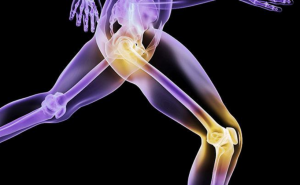
An aging population will always have needs that are specialized and unique, and there is every indication that new technologies will be developed to meet those needs in innovative new ways. Baby Boomers were the largest population bulge up until 2016, and now their numbers are starting to dwindle, being slowly eclipsed by Millennials. However, no matter which generation predominates, people will always be getting to that stage in life where medical assistance and intervention become a critical factor in maintaining quality of life. In the USA, people over the age of 65 are forecasted to be 20% of the population by 2050, up from 15% today.
One of the frequent occurrences with the elderly is the deterioration and failure of important body joints, like hips, knees, shoulders, elbows, wrists, and ankles. Hip and knee joint replacements are very common today, using manufactured replacement parts, but these parts can wear out long before the patient does. New technologies are being developed to improve the longevity of such parts, and the ideas include some interesting uses of technology already in place, such as 3D printers. The industry calls this new kind of fabrication “additive manufacturing” facilitating the production of medical implants that perform better inside humans than anything built previously.
Additive Manufacturing is a new way to build medical implants, and replaces the traditional methods of molding or chiseling parts from solid blocks of metal, like titanium. Using a 3D printer, metal parts can be built layer by layer, with each layer being as thin as 1/50th of a millimeter. This allows the part to be designed and built with very intricate internal structures, and when these internal structures are very similar to human bone structure, the implant can bond more easily to the patient’s bones. These structured metal implants become securely fixed in place, fusing with real bone, which is known as “biological fixation”. Currently, medical implants are often fused to bones with medical-grade cement and that cement can break down over time and cause a loosening of the part. This will lead to another surgery to replace the replacement part that has come loose. Better fixation with better materials design should dramatically reduce this situation from occurring.
There is a market for medical implants beyond hips and knees, especially if the parts can be precisely built for individuals and be fixed firmly in place with biological fixation. For instance, spinal fusion implants will have to be individually tailored and not move around at all, as they will be very close to the spinal cord. Precision and improved fixation will be the watchwords for these new technology medical implants, and there are several companies actively exploring this new technology.
Trend Disruptors has been monitoring these developments and just sent out a new recommendation to subscribers of Trend Disruptors Premium. If you would like subscribe to Trend Disruptors Premium, we are offering a special discount of $200 off the regular price, so you pay only $399.95.
Bye Bye Bank?
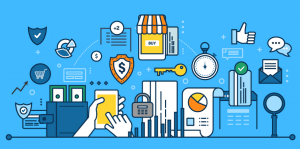
Everything is changing at an increasingly faster pace, however the banking and financial services sector lags behind, continuing to generate complaints about high fees, slow transaction speeds, and onerous security procedures. There are some companies in the sector who have launched Blockchain projects to address these complaints, but tangible results are not evident to the masses just yet. Crypto Currency (CC) was touted as being a remedy to some of these complaints, but CC has also failed to become a mainstream money management solution, as it comes with somewhat complex acquisition, redemption, and spending processes. CC also faces a myriad web of government controls, prohibitions, and regulations that change frequently.
Amazon and Google have launched payment products that begin to address the need for simplified payment transactions. Most of the emphasis so far is with on-line payments at on-line retailer web sites, and these systems require registration of accounts, banking links, and setting up a Google Wallet for the Google product. PayPal is also a major player in this market, and all have made significant inroads with on-line payments. Each system has its pros and cons and all are vying for consumer support to become the leader, however they all frequently need traditional bank links to fiat currency, and that requirement is often the bottleneck and Achilles heel in these systems.
So what if somebody introduces a financial systems service that starts out by getting retailers on-board very early, getting customers on-board very soon after, and introduces a new currency that is easy and fast to link up with fiat currency whenever, or if ever, needed. This approach is quite bold, and seems to have many bases covered, with the potential to become a mainstream hit. These are the central ideas with Facebook’s introduction of their LIBRA currency. Retailers and customers can choose to conduct business in the LIBRA sphere and avoid having to rely on traditional bank processing at all, once they have made the move to LIBRA. The project is being developed by Facebook under the name “CALIBRA” and it is being set up in Geneva, Switzerland. FINMA, the independent Swiss Financial Market Supervisory Authority is talking with Facebook to determine which laws would come into play for the system and the currency, and what Swiss approvals may be required to set up the project base in Switzerland.
The key to success in this market space is to have mass appeal and mass buy-in. The Asian market places are very large, and adoption in these huge markets will be a key ingredient in system success. Google Pay and Amazon Pay have already made significant inroads in these markets and are generating large recent growth numbers. We foresee that India will be a major retailer and customer market base for new financial management systems, and LIBRA will certainly be targeting these markets as soon as they can. LIBRA will need to bolster public trust in a company (Facebook) that has fumbled personal privacy issues recently and lost a lot of trust in their organization. Rigorous protection of personal and financial information will be paramount in gaining public acceptance and government approvals.
When it all comes into reality, traditional banks will have to sit up and take notice.
Trend Disruptors is monitoring these developments and will be recommending companies to invest in that will lead to success for well informed investors.
Stay tuned!
Feeling safer?

In today’s world there is ample reason to want to feel secure in any environment or situation. More each day we hear about violent acts where humans are killed and wounded. Debates rage on about how to prevent or reduce all this mayhem by:
- limiting access to excessively dangerous weapons
- conducting careful analysis and investigation of terrorist activities
- countering the dissatisfactions and/or beliefs that fuel violence
- increasing the amount and scope of surveillance in public areas
Public areas and venues are a favourite target for extremist violence, as the perpetrators want to deliver their message in as shocking a way as possible and thus garner world news headlines. As these events grow in number and severity, perhaps the perpetrators feel that their message is getting through to the masses.
So it is not surprising that there is a large increase in the amount of surveillance being conducted by governments and police authorities around the world. The United Kingdom (UK) has seen a very large recent increase in video surveillance, with cameras deployed in areas around schools, hospitals, and care homes. Current estimate is that there is now one camera for every 14 UK residents.
Other areas being more heavily watched include airports and stadiums, which have an inherent need to conduct the surveillance in both a timely and an efficient way. Several technologies are being deployed and developed to meet the need. The newest surveillance and security systems use technologies that can make use of Facial Recognition, 3D CT scans, and walk-through scanners. Each technology and system has features that can be controversial:
- Facial recognition systems use software to quickly identify each person in camera range, and some systems will then track each person if the system identifies that the person has the characteristics that demand close watching. Some feel that this is an invasion of privacy that goes beyond what is required for good security.
- 3D CT scans are used primarily for scanning luggage, using multiple X-rays to detect dangerous items. We are all probably quite familiar with the scanning of checked and carry-on luggage and have come to accept its usefulness.
- Walk-through scanners are relatively new and the latest developments hold the promise of fast and efficient security. The older full-body scanners required that the subject stand still and hold a pose, while the scanner has a look at everything, to ensure that all is well. The walk-through scanners can now do all of that without the subject having to stand still – everyone just walks through the portals. This walk-through capability is especially desirable at stadiums, where people want to be in their seats to enjoy their entertainment without hassle or delay at the entrance gate for onerous security checks.
What these systems mostly have in common is that there are humans viewing all the images, sometimes with assistance from Artificial Intelligence (AI) systems telling them which subjects to pay more attention to. What may be a significant improvement is to use a system that will independently analyze each scan or image, noticing any threat and reporting that threat to a human. This could well be the way we can achieve security that is efficient and not a threat to, or invasion of, personal privacy. Walk-through scanners have been developed that will do just that. They will soon be set up in test locations, and we will be watching.
Trend Disruptors is monitoring these developments, and will be recommending companies to invest in that will lead to success for savvy investors.
Stay tuned!
Drive less – live longer?
Traffic jams, road rage, and the huge amount of wasteful, unproductive time spent driving to and from work all contribute to increased stress. So, what if there was a solution to these stressful components of our daily lives – wouldn’t that be worth a lot? Would it not contribute to increased overall health and longevity? The solution may be close at hand with the autonomous vehicle (AV), especially when we consider the constantly increasing commute times, the increasing amount and complexity of city traffic, and the ever-increasing safety of self-driving vehicles.
According to the US Census Bureau, the average, one-way commute time is 26.1 minutes. If you commute to a full-time, 5-day-a-week job, roundtrip that adds up to 4.35 hours a week and over 200 hours (nearly nine days) per year per commuter. Add in other times people spend in traffic, such as running errands and chauffeuring children, it is estimated Americans spend over 25 billion hours in traffic overall, so the potential to repurpose driving hours is huge. The drive to work in an AV can be relaxing and productive, using the time to read, compute, sleep, or anything else that you can’t do now while driving the car.
On the safety front, AV’s are being targeted to be 99.9% safer than human drivers. Already they have a braking response time of about 1 millisecond, whereas humans have a 1 second response time. That is a big difference and can be life saving. Globally we have over 1 million traffic crash deaths every year, and up to 50 million injuries. The AV of today can already navigate effectively in virtually every traffic situation, but the future will be even better, as the AV systems and networks are built to learn as they go, from their own AV data and from the data of all the other AV’s on their network.
Several companies are investing heavily in AV development. The key component to win the global AV competition is data, as data is what’s needed for these Artificial Intelligence (AI) systems to learn and continue to learn – – so the company with the most data does best. Each company has partnered with several auto makers to ensure that the current automobile market players are in step with AV developments, as the AV is sure to disrupt the auto industry. Keeping the car buying public up to date is also important, in order to spawn a successful transition to AV’s. Trusting an advanced AI system to drive you to work in an AV, or drive your kids to their soccer game might sound like a leap of faith today, but as the evidence comes in and AV safety is confirmed, who would say “NO” to less stress, fewer injuries, and a longer life.
Bottom line is this is a massive new market, conservatively estimated to be over $6 trillion. Trend Disruptors Premium is monitoring these developments and has just sent out a new recommendation to subscribers that the team feels could be a huge winner in this AV space.
The current Trend Disruptor Premium portfolio contains 9 stocks counting today’s recommendation and the average return is a very respectable 21.11%, especially impressive given that most of those recommendations are less than 6-months old.
If you are not yet a subscriber to Trend Disruptors Premium but would like to be, we are offering a great Special Offer. TD Premium is regularly $599.95, but this week only…$399.95.
Stay tuned …
5G – can you hear it now?
The promises of exponentially higher speeds with 5G cell phone network technology are astounding, so now that 5G has made its first moves off the test bench into public use, we can start to see if the lofty promises might actually be real. The expectation is that 5G will download a 2-hour movie in 3 seconds, compared to the 5 minutes it takes with older and slower networks. Most network processes are expected to be at least 4 times faster than on 4G networks, and some processes like downloading, may be 20 times faster. Right now there are several “live” 5G locations, and here are some of the initial observations:
– South Korea turned on the 5G network in the city of Seoul on April 5/19, coinciding with SK Telecom’s release of the Samsung Galaxy S10 5G Smartphone, the first one with built-in 5G capability. Initial network speed with 5G is good, with measurements coming in at about 430 Mbps, however 5G access is spotty and unreliable around the city, especially in hard to reach locations like subway stations. The phone will revert to 4G whenever the 5G signal is too weak. SK Telecom will ratchet up the speed over a 2 year period, and they expect about 10% of users will be on 5G by the end of 2019.
– Verizon is running tests in Minneapolis and Chicago. The 5G network is allegedly available in many of the popular Chicago tourist hotspots, but it is proving to be hard to find, reliably. The Chicago coverage is reported to be spotty or weak, however, when you can get a good connection the speed is impressive – – up to 630 Mbps on downloads. You need to have 5G capable hardware to access the network, such as the Motorola MOTO Z3, plus the $200 5G MOTO MOD as an add-on. Samsung will soon have the Galaxy S10 5G in North America, but it will likely cost more than the Motorola package.
So, three initial installations are up and running, and so far, coverage is spotty and speeds may be throttled for a while. Consumers who want smooth running games and super fast download speeds will be at the front of the line to adopt 5G. Verizon aims to launch 5G in 30 cities in 2019, and implementation pressure will increase when AT&T, T-Mobile, and SPRINT join in. There will be many cell phone network apps that will also benefit with fast 5G speeds, but most of the impetus today is entertainment.
Trend Disruptors is monitoring these developments and will be recommending companies to invest in that could lead to success for savvy investors.
Note: TD Premium subscribers will be receiving another new recommendation tonight. The TD Premium portfolio is up 16.86% with most of the recommendations less than 6 months old. If you are not a TD Premium subscriber but would like to be, click here to subscribe at a Special Price of only $399.95, a $200 savings!
Stay tuned …
Will AMAZON be in every room of your house?
There are many companies working diligently on interesting Artificial Intelligence (AI) projects, ranging from medical imaging to autonomous vehicles and advanced robotics. We see AI as being a disruptive technology that will have long term and far reaching impacts, and the changes envisioned will be evolutionary rather than revolutionary. Machine learning is an iterative process, and each iteration takes time, as well as careful monitoring and tweaking by software engineers. Often these advances spawn ethical and moral questions, generating lots of lengthy discussion, as well as legislative and regulatory concerns that need to be sorted out. It is no wonder that AI projects are indeed evolutionary, and for the most part – unstoppable.
In the world of AI, one of the most poorly kept secrets is Amazon’s VESTA Project, which Amazon is not talking about, but lots of others are. VESTA is the kind of initiative that illustrates many facets of AI. The VESTA idea is to integrate smart robots into the AMAZON smart home environment, interacting with ECHO and ALEXA devices in your home. Interesting, and very cute, that VESTA is the Roman Goddess of hearth, home, and family. These domestic robots will be much different from their workhorse robots that automate AMAZON warehouses. VESTA is being developed by the Lab126 division, which is not part of the industrial robot division. VESTA may be able to integrate household chores, entertainment, information, and home systems management all within the AMAZON smart home systems environment.
It is anticipated that the Amazon VESTA robot will be mobile enough to guide itself to every room in your house, as needed or as commanded. The use of cameras and sensors would be similar to those used in autonomous vehicles. Other domestic robots have been tried, with the most successful to date being ROOMBA, which has a very limited scope of duties – vacuuming and parking. However, ROOMBA sales are impressive and the shopping public certainly likes the idea of machines taking on boring chores around the house. Other domestic robots, like SONY’S barking dog “AIBO” and the dancing “QRIO” have proven to be just expensive novelty items that did not conquer the domestic robot market. Success in the domestic robot market will depend on the machines having desirable features that are easy to use in an attractive package. Easy to say, but still a little elusive – for now.
There will be many challenges to these developments, as there is growing concern with technology infiltrating so many areas of our lives. Concerns range from invasion of privacy, loss of autonomy, protection of personal information, and a general fear and mistrust of technology that we do not fully understand. And of course there is the fear brought on by all those chilling, and perhaps silly, sci-fi movies with titles like “Revenge of the Killer Robots”.
Trend Disruptors is watching this sector closely, as we perceive great profit potential when these AI devices come to market and succeed. There are many technology companies that could play a pivotal role in providing specific expertise and/or specialized products to make domestic robots a huge success – and a welcome addition to our homes.
Stay tuned!
Will CRISPR be an accepted Solution?

Health care costs and budgets are ballooning all around the world as we see global populations moving into higher and higher age brackets. With so much health care research going on, doctors are challenged to keep up with new drugs and their side effects, as well as new procedures and tools that deliver more accurate and timely diagnoses and remedies. Once in a while a new technology will emerge that has the potential to dramatically alter the status quo. CRISPR has that potential, as it may be a way to end all disease – wow – a very BOLD statement indeed, but could it be true?
CRISPR (pronounced crisper) is a simple and powerful tool for editing genomes, allowing researchers to alter DNA sequences and modify gene function. There have been DNA editing tools before, such as TALENS, but CRISPR is about 4 times more efficient. The term CRISPR is the short form for describing CRISPR-Cas9, a specialized stretch of DNA. Cas9 is an enzyme that acts like a pair of molecular scissors, able to cut strands of DNA. CRISPR itself stands for “Clusters of Regularly Interspaced Short Palendromic Repeats.” The process was first fully described in a paper published by researchers at Kanazawa University and Tokyo University in 2017, although research reports and papers go back as far as 2007 by Danisco A/S in Denmark, 2012 in the National Institute of Health and PNAS , and 2013 (MIT and Harvard). These studies and papers all help to pave the way forward for many possible therapeutic applications in humans.
Editing DNA has many potential applications, such as correcting genetic defects, treating and preventing disease, and improving food crops. There is of course vigorous debate about the ethics of genetic modification, in humans, in other animals, and in food. Although the really exciting potential may be in disease eradication, there are current uses of CRISPR in the food and agriculture industries, such as the engineering of probiotic yoghurt cultures and vaccinating industrial cultures against viruses. We currently also have in place the genetic engineering of crops to improve yield, drought tolerance, and nutritional properties, all with attendant controversy.
Another promising facet to CRISPR technology is the ability to create gene drives, which are genetic systems that increase the chance of a specific trait being spread generationally to a large population, such as increased sterilization among the female mosquitoes that carry malaria.
There are certainly many positive-sounding potential benefits for using CRISPR technology. It’s relatively easy to get excited about eradicating a disease like cystic fibrosis, and it is hard to deny that global populations would benefit from increased food production and nutrition … but the big questions and debates centre around – – is DNA editing safe and ethical. Academic researchers are generally cautious and wary of proceeding too quickly, wanting to establish ethical standards, safety procedures, and eventually achieve public acceptance through long term trials. Virtually no one wants to proceed without caution, but capitalism has a need to push hard in generating gains and profits for companies and shareholders. DNA editing, in any organism, has great potential, but there are many perceived risks and questions, such as:
- will it be ok to eradicate disease viruses along with the animal species carrying them around?
- -will there be unintended ecological impacts, such as a gene drive trait spreading beyond its target group?
- will modifying human eggs, sperm, embryos, (known as “germline” editing) be safe, given that our knowledge of how it all really works in the long term is still somewhat limited (Are we now smart enough and ready to “play God”?)
- how do we control germline editing and prevent it from veering off into human enhancements, beyond disease eradication?
- how do we rationalize the perhaps unknown consequences for future generations without their consent?
The debate will be a struggle, and probably a long one. In the USA the National Academies of Sciences, Engineering, and Medicine have put together a comprehensive report with guidelines and recommendations. Meanwhile, research will continue and Trend Disruptors will monitor progress, looking for opportunities to invest in companies that we perceive to be a good bet. As well as investment potential, our analysis of this disruptive area of health care technology must include extra large doses of other considerations, such as ethics, safety, and ecological ramifications.
Stay tuned!
Can a Better Diagnosis Lead to Better Health?
We have written articles about Artificial Intelligence before, but nothing hits home like making it personal – your health and the health of your loved ones. Some of the most important and valuable medical tools are those that produce Images, like CT scans, X-Rays, MRI’s, Mammograms etc. The standard routine today is for highly trained specialists, like Radiologists, to analyze images and detect anomalies, all helping to determine a course of action to remedy problems detected in the images. The quality of the image is a big factor in the accuracy of the diagnosis, and technology now provides some very high quality images, and better imaging technologies are emerging all the time. Currently, diagnosis relies on well trained humans to recognize and interpret each image. It is a very demanding and time consuming manual process. Humans are sometimes overworked and get tired, which can cause errors or omissions. Humans, when they are tired, may not quickly or accurately recognize a subtle pattern or condition. A machine that can analyze many images accurately in a short time period has the advantage of being able to work around the clock without getting tired. A very high level of precision is needed here, and we humans could all use some help – we all stand to benefit.
There are several companies developing and introducing devices and software that analyze images faster and more accurately than humans, using Artificial Intelligence (AI). The developments use deep machine learning to “teach” their software to “see” everything accurately in every image. With ultra modern 3-D images, machine analysis can detect much more, and report quickly about problem conditions. Machine analysis can significantly increase the detection rates for tumors, blood anomalies, bone damage, and brain damage. It can also reduce instances of inaccurate or incomplete diagnoses, as machine analysis can see things in an image that the naked eye cannot, and recognize patterns that challenge or elude human memory. Machine analysis can quickly scan hundreds of images and make use of them all to detect problems that may not be evident or obvious when observing only a small number of scans. Given this big leap forward in diagnostic technology, the potential for a big leap forward in treatment success awaits us all.
But wait – does all of this progress come without a struggle? Of course not!! When it comes to health and medicine there are many hurdles to be leapt, and rightly so, as there are human lives at stake. In the USA the Food and Drug Administration (FDA) treats new medical equipment in much the same way as it treats new drugs – they must all pass rigorous testing to ensure that they are safe for humans, and that they will benefit humans. Harmful drugs and equipment must be stopped, and so must drugs and equipment that do not fulfill their promises.
Health technology is a very large investment space, and there are many large and small corporations conducting Research and Development using AI. The new machines are expected to provide faster and better medical imaging diagnoses, assisting doctors and patients to get to a healthier place much sooner. There are so many reasons that health care is expensive and complicated, but at the end of the day, there is probably no better investment than good health – without your health, nothing much else really matters.
Let Trend Disruptors be your guide to the future, as we continue to identify technology investment opportunities that can lead to financial success.
Stay Tuned!
Do we need Quantum leaps in security?
There are many stories we have all heard about computer hacking, Identity Theft, and other bothersome or criminal exploits involving digital assets. We all try to safeguard our systems and our data, but it is extremely difficult now that there is so much data and so many devices involved. The amount of interaction and the amount of data has multiplied many times over with the introduction of Smartphones, Cellular Networks, and the Internet of Things (IoT). Who had the foresight to realize that your refrigerator or your car might provide an easy way to hack into corporate or government networks? We really do need to “protect” everything. One clear illustration of how rampant computer hacks are becoming is the existence of “Collection #1”, which is a huge data folder that exposes nearly 800,000 email addresses and about 21 million passwords, all in one folder about 87 gigabytes in size. Unlike breaches with criminal intent Collection #1 is just out there on a public hacking website for anyone to see – it is not for sale !!
Securing digital devices and data still relies on encryption, the process of recoding data using a digital “key” and unlocking that data only with the same identical “key”. Individuals and corporations can maximize the effectiveness of encryption by using “strong” passwords, where you mix in capital letters, symbols, and numbers. Cracking modern encryption keys is very difficult, as encryption has come a long way from the original method used by Julius Caesar of simply choosing a space offset for each letter of the alphabet eg: offset of “2” where every “A” is recoded as “C” etc. There are only 25 possibilities for this recoding, so it is quite easy to crack a Caesarean code. Data encryption has taken many leaps forward in the intervening years and is now considered to be quite un-hackable. The easiest targets for hackers are written down passwords at your desk, and loose talk at the water cooler.
However, with Quantum computing now emerging, the ability to crack strong encryption keys is getting closer, simply because Quantum computers are so fast and powerful that they can try many guesses in a very short time. This is the “brute force” hack, where given enough guesses, the correct key will eventually be found. What currently might take 100 years of guessing with a fast, classical computer might take only 5 years with Quantum computing.
Quantum computers use the fundamentals of quantum mechanics to speed up computations, using flexible qubits instead of classical bits which can only be a ZERO or a ONE. Qubits can be either, both, or something in between. With quantum computing we should have the ability to design purpose built algorithms to solve specific problems, such as cracking codes, and designing un-crackable codes. The current leaders in the Quantum computing space are IBM, Google, Microsoft, Alibaba, Intel, D-Wave Systems, and Rigetti Quantum Computing. The race is on to see who will dominate with Quantum solutions for the broad marketplace. In the next 10 years the number of Quantum computers will likely overtake the number of classical computers, ushering in a new era of computing, with speeds and power unimaginable just a few years ago. This will require more stable hardware, commercial software development platforms, and large, fast, cloud computing capabilities.
Let Trend Disruptors be your guide to the future, as we continue to identify technology investment opportunities that can lead to financial success.
Stay tuned!




